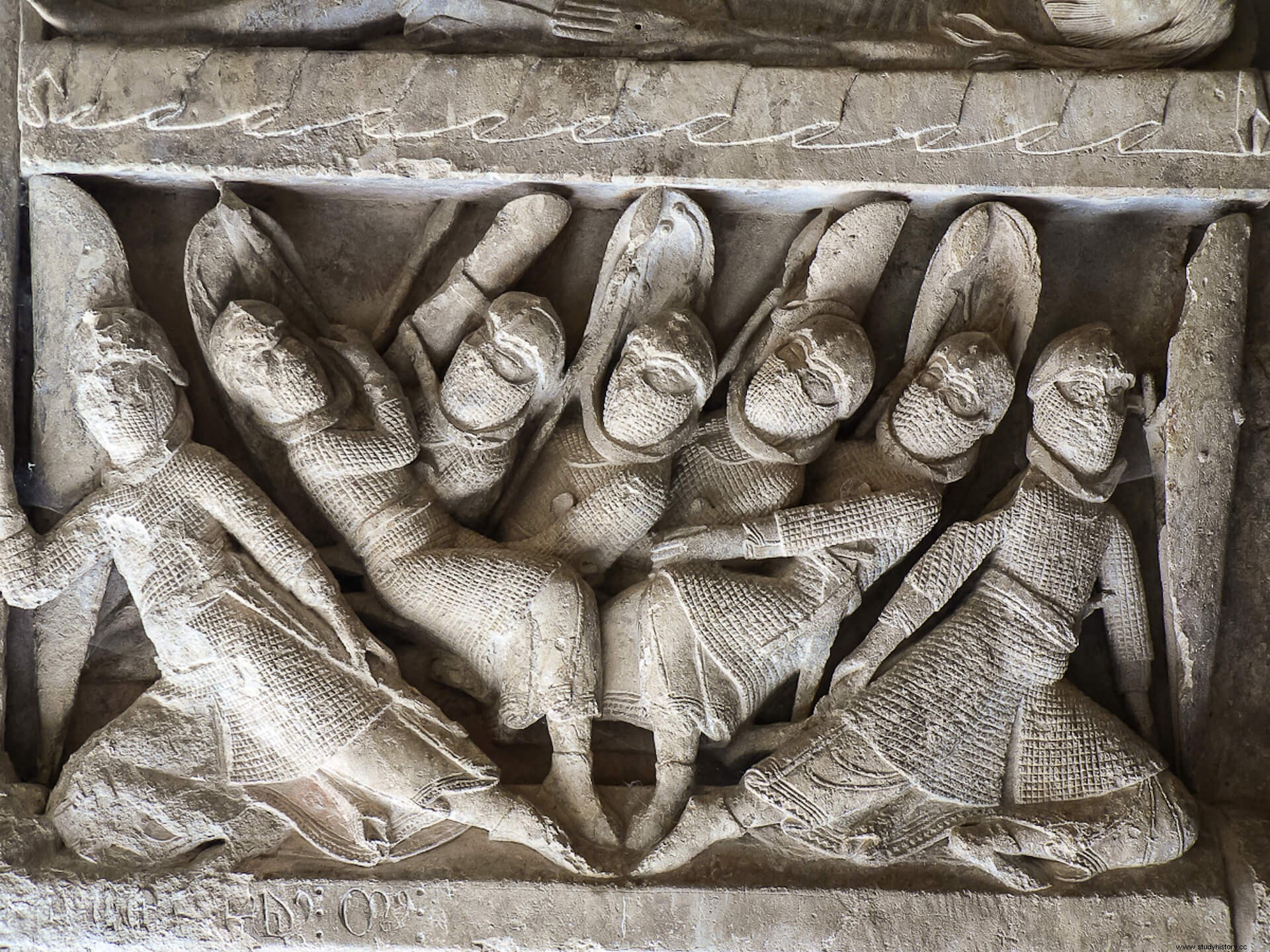
Unequally both were distorted by the Cidian tradition . Alfonso VI became a mediocre, envious, self-conscious and minor king, turned into a paradigm of a disloyal, manipulable and obtuse king. Álvar Fáñez would be gobbled up by the Minaya from the Song of Mio Cid , epic archetype of the subordinate knight skilled in battle and model of excessive loyalty towards the charismatic leader. Historical sources present us with a different reality than those epic, heroic, literary figurations.
Neither Alfonso VI was such a bad king, nor Rodrigo Díaz such a good vassal, nor Álvar Fáñez such a skillful knight, at least not in the way that the Cantar he would glorify it, setting enduring and settled images even in our days. But something motivated the consecration of Álvar Fáñez as a heroic knight, and we must look for that reality in the years in which he was responsible for the defense of a Toledo in a persistent state of threat against the Almoravids. But before that Fáñez had hardened himself in the difficult world that he had to live in, acting at all times as a loyal agent to Alfonso VI, executing the different missions that the king entrusted to him, always remaining faithful to the monarch.
There is not too much historical evidence that we have left of Álvar Fáñez, but not so little as to not trace a biography of the character. Plácido Ballesteros did it, preparing the most complete study on Fáñez that has been done to date. We do not know exactly when he could have been born, although we suppose that on dates similar to those of Rodrigo el Campeador, with whom he would maintain some degree of kinship. We see him appearing as confirming in the letter of deposit that the marriage made up of Rodrigo and Jimena signed in the year 1074, where it is said that he is Rodrigo's nephew . This allows us to see him integrated into the court of Alfonso VI, after possibly having served, as his relative, the late Sancho II of Castile. From then on, the king would entrust him with different complex tasks that entailed responsibility.
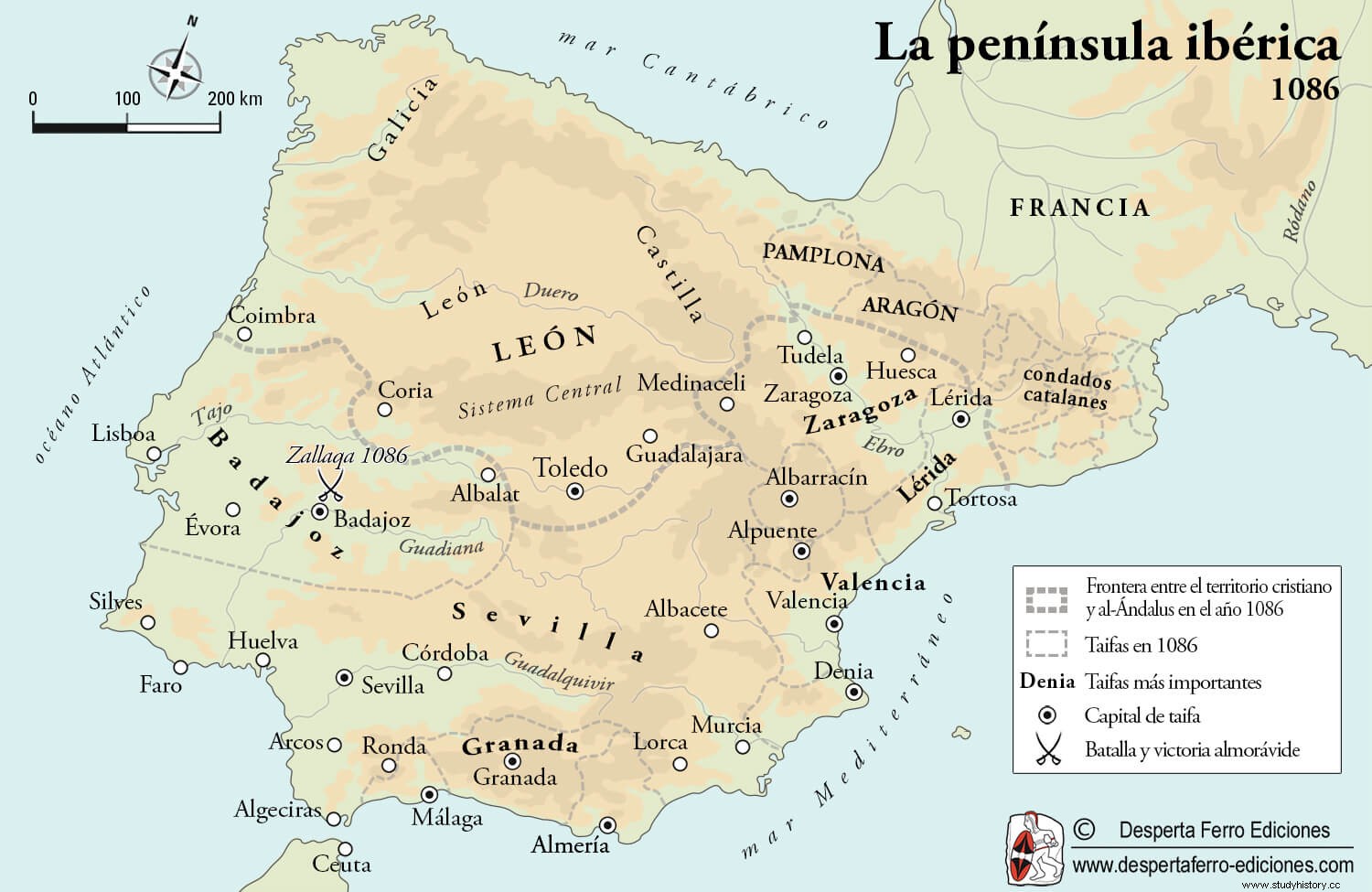
The first one we are aware of leads us to the spring of the year 1086, when Fáñez, after having helped Alfonso in the operations that led to the conquest of Toledo the previous year, would be appointed by the sovereign to protect al-Qadir. Al-Qadir, grandson of the great al-Mamun, with whom Alfonso had maintained good relations, had been compensated with the throne of Valencia in exchange for the delivery of Toledo. But Valencia was a convulsive scenario , complicated, where various factions coveted power, and where there were powerful and influential families. Al-Qadir does not seem to have many virtues. Muslim chronicles present him as a pusillanimous individual, dominated by inaction and a taste for luxury and the pleasures of life. Someone like that needed to be protected on his new Valencian throne, and incidentally ensure the tributes that Valencia would pay Alfonso VI from his new position. Alfonso came out winning with that arrangement, since he would dominate the Valencian throne by placing an easily dominable puppet on it. The one designated to protect the new, and weak, Taifa was precisely Álvar Fáñez, who escorted al-Qadir to Valencia under the command of an army of some four hundred Christian knights provided by Alfonso VI.
Álvar Fáñez in Valencia
The Valencian stage of Fáñez is very interesting, because there this warrior will act in a very similar way to the one developed by Rodrigo Díaz in that same context years later. Contemporary Islamic sources, preserved in later chronicles, allow us to contemplate an Álvar Fáñez who makes use of insurgent Valencian Muslims who swell his ranks, those known as dawair , in which the Champion will also rely later, following a similar pattern of behavior in his stage as protector of Valencia. From a village near Valencia called Ruzafa Fáñez and his men would ensure the safety of the new Valencian king and would ensure the collection of taxes for Alfonso VI, part of which Fáñez himself would pocket. In fact, Fáñez did not take long to subject al-Qadir to strong fiscal pressure, seeking to promote the unpopularity of the new taifa, following a strategy of dissolution that Alfonso VI had carried out to destabilize power in Toledo and ultimately dominate it. altogether. Játiva, one of the towns near Valencia, refused to pay these suffocating taxes and declared itself in rebellion, forcing al-Qadir to besiege it. The Taifa of Lérida, who coveted Valencia, took advantage of the occasion to attack with an army that included Catalan knights commanded by Guirart the Roman. Al-Qadir fled to Valencia and al-Mundir de Lérida was then able to become strong in Játiva and also dominate the Taifa of Denia.
Fáñez maintained a passive attitude at all times, observing how events unfolded. He did not stop demanding burdensome tributes from al-Qadir, always seeking his deterioration in order to achieve absolute domination of Valencia , following guidelines conceived by Alfonso VI. The power of Fáñez grew and that of al-Qadir diminished, which meant that quite a few Valencians, the aforementioned dawair, soon joined the ranks of the Castilian. , called by other sources “malefactors”, “garzons”, “twisted”. A chronicler tells us vividly about those tornadizos that joined the ranks of Álvar Fáñez:
Although the chronicler refers to a later moment, he helps us to understand that Fáñez's troops would be of a mixed nature, as would those of the Campeador. And it is that in these times of convulsions the religious borders were much less clear than we can believe today. Some of those Muslims would no longer stop serving Fáñez, accompanying him from then on and on in different missions and in different geopolitical scenarios.
Fáñez was not satisfied with extracting tribute from al-Qadir. He supplemented those profits with those obtained from the launch of razzias against territories belonging to the Taifa of Lérida, such as Burriana. Accompanied by those "rogue Moors" and "other Almogavars", indispensable connoisseurs of the land, he assaulted and devastated towns and castles, obtaining goods such as cows, sheep, mares and various valuables, which were taken to Valencia to be sold there at auction. . All this was what Rodrigo Díaz later did in his stage as protector of Valencia, and even later, acting as an independent warlord, totally unrelated to Alfonso VI. And that is why we can consider that Álvar Fáñez, under the influence of Alfonso VI, created some tax and war structures that would be exploited with greater intensity by the Campeador. The brain of this model of pressure and exaction was none other than Alfonso VI, who dominated various peninsular scenarios from a distance, using well-trained and disciplined agents to do so. Fáñez always served the king with loyalty and discipline, and no doubt obtained many benefits for himself. Rodrigo Díaz understood that he could go further, he was not satisfied with being a mere royal agent, he understood that he could become the de facto owner of Valencia and its taifa, and he acted accordingly.
The Almoravid invasion
Fáñez's position around Valencia was ideal, acting as a de facto ruler, enriching his king, and profiting himself, based on extortion and war, all this based on the power that a powerful army of captured Christian and Muslim knights gave him. But finding himself like this, the Almoravid storm was unleashed. , and the faithful Fáñez was called by Alfonso VI to swell the army that would have to face the North Africans commanded by Yusuf ibn Tasufín on the battlefield. He was not even a year as protector of Valencia, and in a few months he went from the Valencian honeys to the galls of the Christian defeat in Zallaqa , in the vicinity of Badajoz (October 23, 1086), against some Almoravids who had come to the Iberian Peninsula to dominate it and stay there. From that day on, relations between Christians and Muslims on the peninsula will begin to change, and the dominant model of Alfonso VI, based on extortion, war, political-military intervention, will give way, in a few years, to open confrontation between the Christian kingdoms and a unified al-Andalus dominated by the Almoravids.
However, after Zallaqa, and while the North African domain was consolidated, Alfonso VI continued to intervene in the politics of the Taifas, trying to dominate them and drain tributes into their coffers. For this he used his main captains, sending Rodrigo el Campeador to Valencia, to act there as Álvar Fáñez had done, and Fáñez himself to the area of Granada and Almería. Abd Allah ruled Granada, the last king of a Zirid dynasty of Berber origin who will leave us an autobiography that is undoubtedly a fundamental text for understanding the complexities of the second half of the 11th century in the Iberian Peninsula. In those Memories Abd Allah Rodrigo el Campeador is conspicuous by his absence, but not Álvar Fáñez with whom the Taifa king himself had to deal with in tense negotiations. His story allows us to know first-hand the modus operandi of those magnates who acted in the name of Alfonso VI, and also in their own.
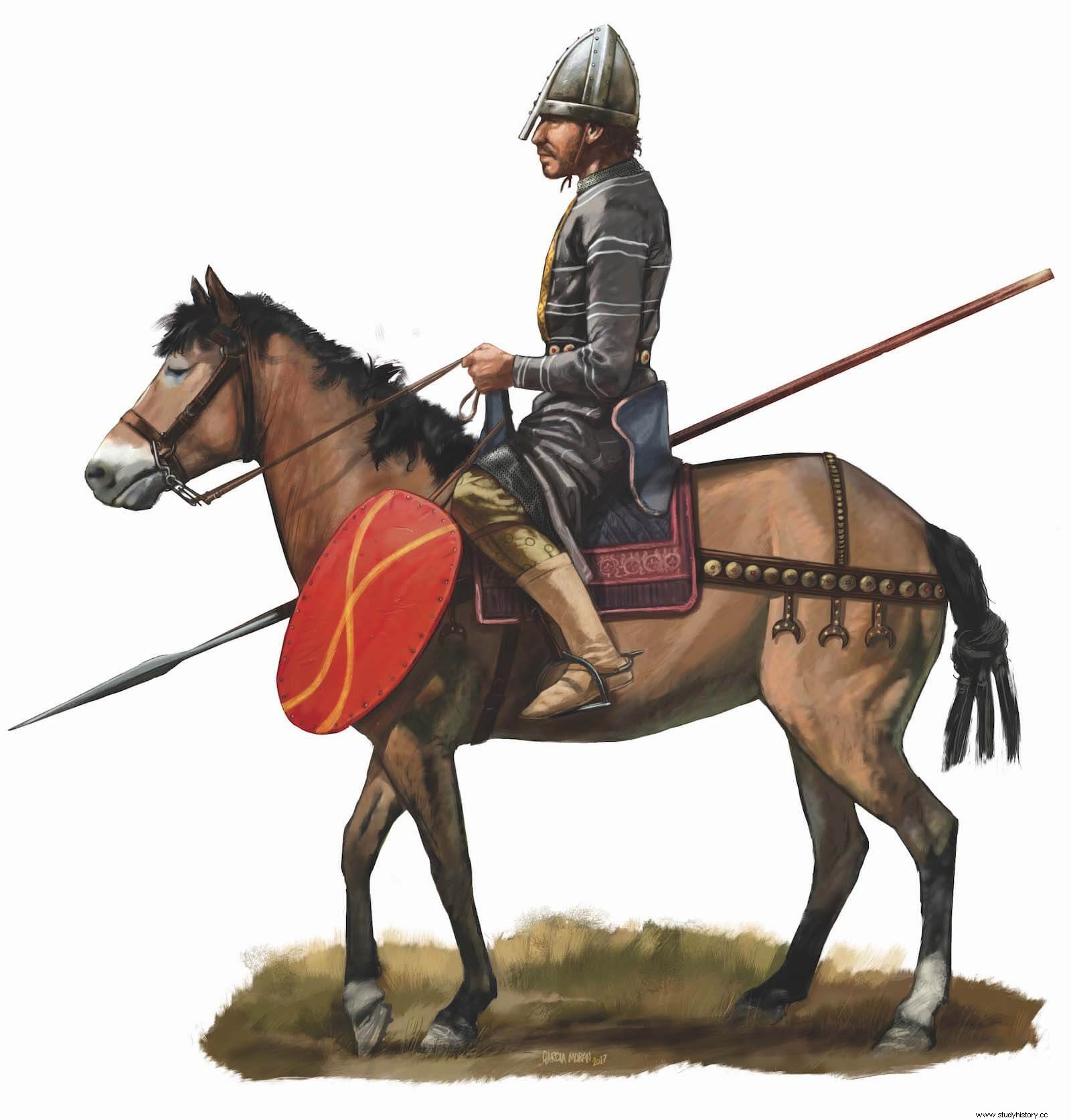
It would be between the end of 1088 and the spring of 1089 when Fáñez would operate in the taifas of Granada and Almería , after having acted in the area of Guadalajara and the Henares corridor after the defeat of Zallaqa, as well as on the borders of León and Castilla containing the advance of Almoravid squadrons. He would also have been integrated into the host that Alfonso VI organized in Toledo to lift the siege to which Almoravid and Andalusian hosts had subjected the Christian fortress of Aledo (Murcia), an expedition after which Rodrigo Díaz was banished for the second time. The support for the Almoravids in Aledo from Taifas such as Granada and Almería would lead Alfonso VI to send his faithful Fáñez there, to extort them and demand tributes with the threat of destroying their kingdoms if they did not pay. That was undoubtedly an act of force by the Leonese emperor, and a punishment for those who had supported the Almoravids with troops and money to besiege Aledo.
Abd Allah relates that "Álvar Háñez was the Christian chief who was in charge of the regions of Granada and Almería", from the hands of Alfonso, who "had commissioned him with some and other states, so that he could act as he wished, proceeding against Muslims who were unable to accede to his demands, extracting money from them and intervening in as many matters as could provide him with some advantage”. Abd Allah underlines in that paragraph the autonomy of criteria of these royal agents, who despite serving their king also acted, to a large extent, on their own. What it was about was weakening the Taifas and extracting as much money as possible from them, and Fáñez already knew very well how to proceed in that sense, thanks to the experiences lived in Toledo and Valencia. At first Fáñez sent an emissary to Abd Allah, to inform him that he would invade and destroy Guadix if he did not pay him a kind of ransom in exchange for not acting against one of his cities. Abd Allah knew that he did not have an army with which to confront the troops commanded by Fáñez, and that is why he agreed to pay the Christian commander, "making a pact with him so that, after receiving the sums, he would not approach none of my states. After collecting the money, Abd Allah continues, Fáñez said the following words to him:
The Granadan exposed the Christian that he was not in a position to pay anything to his king, due to the loss that the arrival of the Almoravids and his own demand had caused him, but, he recounts , "the pig did not answer me". Fáñez limited himself to saying nothing and sending his king a messenger to bring him up to date on the situation. Alfonso VI did not take long to go in person to extort an Abd Allah located between the Almoravid anvil and the Christian hammer . The Christian king extracted from the Granadan the sum of 30,000 meticals, in respect of the backward outcasts from the battle of Zallaqa up to that moment. Not a year passed between those days and the moment in which the Granada Zirí was overthrown by the Almoravids and deported to North Africa, where he wrote those Memoirs .
With the situation in eastern Andalusia finalized, the new destination for Fáñez was Seville , where he had to help al-Mutamid, prince of that powerful taifa, to contain the Almoravid advance. It was on that mission that Álvar Fáñez was defeated and wounded in a battle against the North Africans near Almodóvar del Río. A concise piece of news from that day tells us that Fáñez was defeated in battle and wounded in the face with a blow from the sword:“In this year, Ven Alhange dealt with Aluar Fañes in Almodóuar and he vençiole and gave him a great ferida with sword in the face ” (First General Chronicle , ed. R. Menéndez Pidal, Madrid, Editorial Gredos, chap. 864, p. 535-536).
The fall of Seville into Almoravid hands would lead Álvar Fáñez to operate for a time in the area of Zorita de los Canes, Cuenca and Huete, assuring Alfonso VI's domain in a sector that had belonged to the Taifa of Toledo and lately to al-Qadir, the latter assassinated in Valencia in October 1092. A little later those lands located between the current provinces of Cuenca, Guadalajara and Toledo would be called “the lands by Álvar Fáñez” , thus leaving evidence of the military and government activity carried out there by the Castilian knight, who will appear in some document of the time (1097) as "tenente" of Zorita (de los Canes) and "lord" ("dominus") of Zorita and Santaver. Developing this new responsibility, he is again defeated by the Almoravids, possibly one of them in Consuegra (year 1097), where the North Africans crushed the hosts of Alfonso VI and where Diego Ruiz, the only son of Rodrigo el Campeador, met his death.
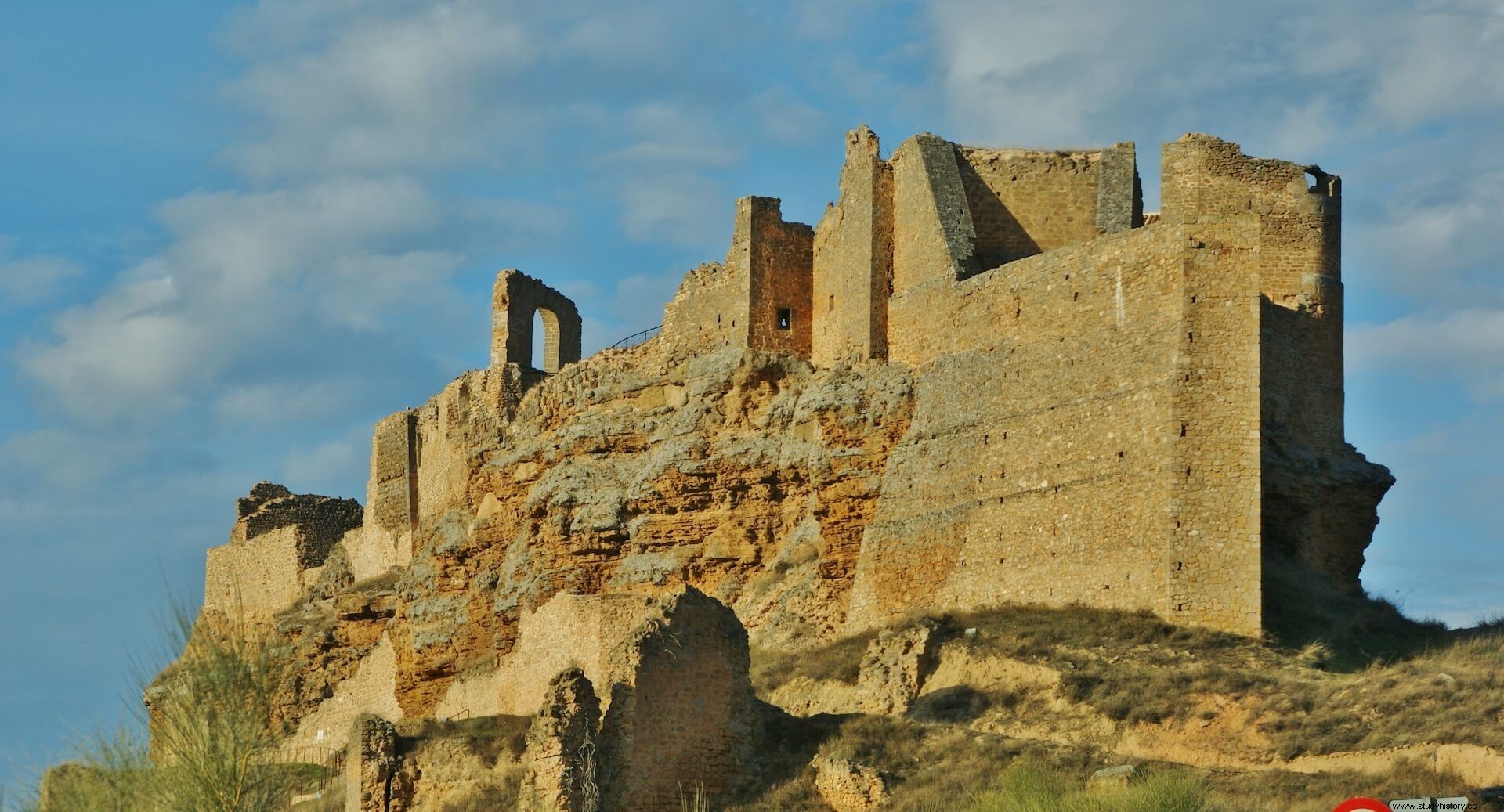
The Almoravid pressure on Toledo forced Fáñez to concentrate in his defense, appearing in the documentation as "Duke of Toledo" and "Prince of the Cavalry of Toledo". These charges, recently created, show a Fáñez in charge of defending a Toledo in a permanent state of threat . And it is that at that time Álvar Fáñez was already one of the most preponderant magnates of León and Castile, as evidenced by the fact that he had managed to marry one of the daughters of the powerful Pedro Ansúrez, the great confidant of Alfonso VI, his right arm, his main vassal, perhaps the most influential tycoon of the moment.
We have more complete information about our protagonist in 1108, the year in which the Almoravids commanded by Tamim ibn Yúsuf, one of the sons of Yúsuf ibn Teshufin, will resoundingly defeat near from Uclés (Cuenca) to some Christians led, among others, and precisely, by Álvar Fáñez. In that battle of Uclés García Ordóñez, Count of Nájera, and Sancho Alfónsez, the only male child that Alfonso VI had managed to have after several marriages, and who was the result of his union with the Muslim Zayda, were killed. Sancho must have been 13 or 14 years old at the time, and he would not die in the middle of the battle, but later, being chased and ambushed by an Almoravid squad he and the magnates who protected him. Álvar Fáñez was able to flee the debacle and take refuge in Toledo with some of his own, perhaps thinking that Toledo would be the next target attacked by the Almoravids.
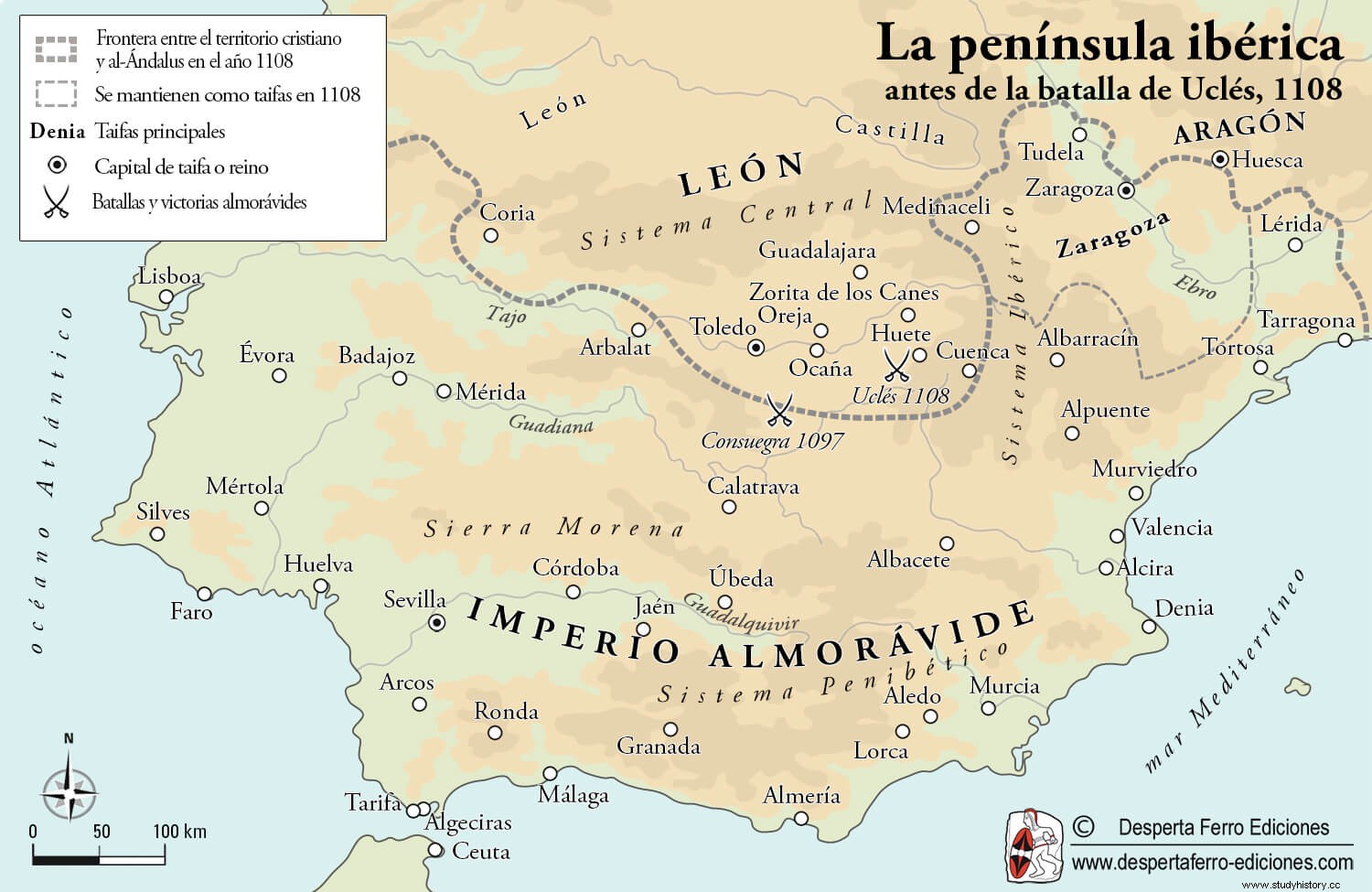
Rodrigo Jiménez de Rada, archbishop of Toledo and chronicler , narrates in his work from the mid-13th century the appearance of a defeated Fáñez before a desolate Alfonso VI, who will demand explanations for the death of his only male heir. "Where is my son, the joy of my life, the consolation of my old age, my only heir?", a devastated Alfonso rebuked his men, whom he accused of not having done everything possible to save the life of the infant in the battle, if he had not given his life for him as García Ordóñez had done. It is in those moments when Álvar Fáñez would have taken the floor to explain to his king the reasons that had led them to escape and take refuge in Toledo. Had they fallen, as the young prince had fallen, the whole kingdom might have been lost. Jiménez de Rada introduces us to a Fáñez possessor of what we now call a “sense of state”:
In the defeat of Uclés, Alfonso lost not only his son Sancho, but also important border towns such as Cuenca, Amasatrigo, Huete, Uclés itself, Oreja, Ocaña and Consuegra. The emperor would only live one more year. Possibly his death was precipitated by the pain caused by the death of his only son. Her daughter Urraca would ascend to the throne that same year, amid a division of opinion between those who supported her and others who understood that a woman was not qualified to assume the highest responsibility in the kingdom. She forced to marry Alfonso I of Aragon, later called "the Battler", it would not take long for a civil war to start between Aragon and León-Castilla and the supporters of one and the other.
The death of a faithful knight
Fáñez always remained faithful to Urraca, as he had done for years with her father, and it was precisely by serving her that he met her death. During that intra-Christian war there were border councils that supported Alfonso de Aragón and revolted against Urraca. One of them was Segovia, and Fáñez was sent by the queen to try to quell that revolt. In the course of that mission, which would be the last for him, the faithful knight, hardened in a thousand battles against the Muslims, met his death.
In 1114 Álvar Fáñez died in Segovia, and the hero was born, possibly in Toledo. And it is that the memory of Fáñez lasted and the figure of him was enlarged by later writings. One of them, from the middle of the 12th century, the Chronica Adefonsi Imperatoris or Chronicle of Emperor Alfonso VII , perhaps composed in courtly environments in Toledo, recounts that after the death of Alfonso VI the Almoravids took advantage of the state of confusion and lack of leadership in which the kingdom had plunged. The North Africans focused all their energies on recovering Toledo for Islam, concentrating powerful armies that laid siege to the city on the Tagus. But Álvar Fáñez was in Toledo, who bravely rejected with his own, and advised by wise elders, different assault attempts launched by the Muslims:
It was not the only occasion in which the "Prince of the Cavalry of Toledo" had to repel Almoravid attacks behind the Toledo walls. That contribution to the defense of the new symbolic capital of the kingdom of León and Castile would serve so that from now on he would be remembered as a hero, adorned with the virtues of good knights in different poetic compositions. One of them, the Poema de Almería, also from the middle of the 12th century, possibly made by the same hands that wrote the Chronicle of Emperor Alfonso VII , equated him with the most famous Castilian knight, “Mio Cid” Rodrigo Díaz, who would have considered himself inferior to Fáñez:
It is the first mention that we find of “Mio Cid”, and also the first time that this epic couple made up of El Campeador and Álvar Fáñez is alluded to, which will be called “Minaya” by a Cantar de Mío Cid that at that time would already be sung by minstrels in squares, markets and castles. The Singing It would only consecrate and amplify that association of heroes, where the Cid is the great leader and Minaya the main man and captain of him, his "right arm" or "dexterous arm". However, we have had occasion to verify that Rodrigo and Álvar lived different and separate lives, following different paths. One was always faithful to his king, the other understanding that he could be called upon to undertake such an enormous and glorious undertaking as the conquest of Valencia and his kingdom, and acting accordingly. But every epic hero needs attributes that reinforce his heroic nature, his charisma and greatness. A horse (Babieca), some swords (Tizona and Colada) and also a self-sacrificing, faithful, brave and skillful lieutenant like that Minaya that the Cantar presents us with. , which is nothing but a copy of Olivier in the Chanson de Roland , and that in his lifetime he had set an example of loyalty to a leader, not named Rodrigo, but Alfonso.
Bibliography
- Ballesteros San José, Plácido:Alvar Fáñez. Historical trajectory of the defender of the kingdom of Toledo (1085-1114) , Guadalajara:Intermediate Editions, 2014.
- Martínez Díez, Gonzalo:The historical Cid. An exhaustive study on the real Rodrigo Díaz de Vivar , Barcelona, Planet, 1999.
- Mínguez Fernández, José María:Alfonso VI. Power, expansion and military reorganization, Hondarribia, Editorial Nerea, 2000.
- Pérez Henares, Antonio:The land of Álvar Fáñez , Madrid, Almuzara, 2014 (novel).
- Porrinas González, David:El Cid. History and myth of a warlord , Madrid, Awake Ferro Editions, 2019
